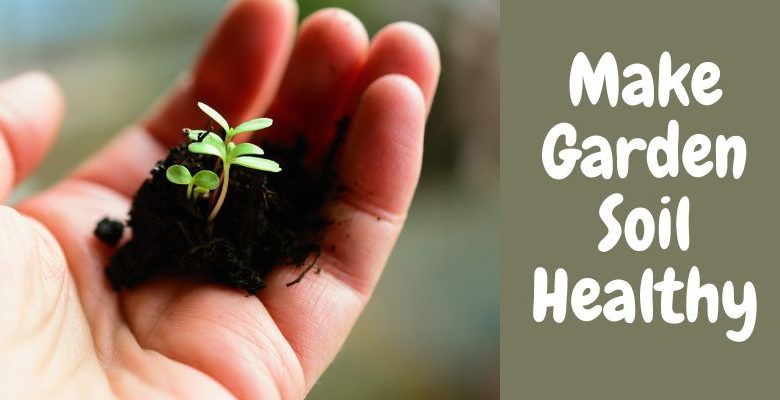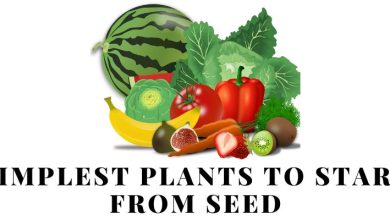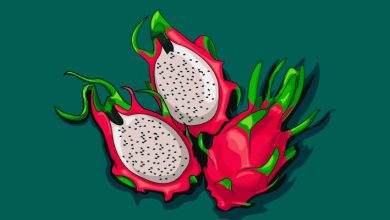
Whether you’re growing flowers, herbs, vegetables, a lawn, or a shrub border, healthy soil is an absolute must. Your plants will become less susceptible to pests and diseases, grow better and look better. With a bit of knowledge, hard work, and patience, you can have healthy soil no matter what soil you start with.
Most Americans would have excellent soil if it could be obtained by purchasing fertilizer from the garden centre. Fertility is undoubtedly a component of good garden soil, but much more is at play. Excellent soil has the following qualities:
Healthy Soil Characteristics
- Excellent texture: Gardeners frequently refer to the “crumb” of their soil. This refers to the soil’s texture. Like cookie crumbs on top of an ice cream sundae, good soil is crumbly.
- Plenty of organic material: Organic material is just decaying plant and animal tissue that improves your soil by turning it into a hummus. Humus is great because it enhances soil aeration and helps to improve soil texture by fusing some smaller particles together. Moreover, it makes your soil better at absorbing and releasing moisture. Finally, organic matter aids in feeding your plants with nutrients. Plants may absorb and utilize organic matter when it has been broken down into its constituent parts by microorganisms.
- Healthy pH: A pH that is in balance measures how acidic your soil is. This has an impact on the minerals in garden soil and how readily available they are to your plants. In general, your plants will be able to absorb these minerals better the closer to neutral your soil is. A more neutral pH is ideal for most flowers, herbs, and vegetables, while certain plants do require a more acidic environment.

Three Main Types of Soil
The composition of the soil should be taken into account next. Three primary types of soil exist:
- Clay soil: Clay consists of small particles that clump together strongly. Although clay soil has a tendency to be more fertile than other types of soil, it is not the best soil type for gardening because of how difficult it is for plant roots to penetrate. Although improving clay soil requires some effort, it will significantly simplify life for your plants.
- Sandy soil: Sandy soil drains too quickly and is less able to hold onto nutrients, but it is undoubtedly easier to work than clay soil.
- Loam: Loam is perfect for garden soil. Organically rich, crumbly, and retaining moisture while still draining properly. This is the “good” garden soil that we are aiming for.
Tips for Improving
You may do a number of things to make your soil better. Fortunately, they are all quite simple to complete.
Test Soil: The first step is to test your soil and learn as much as you can about it. To find out more about the texture and level of life in your soil, you might want to perform a few do-it-yourself soil tests. It is a good idea to request a soil test from your county’s cooperative extension; this will let you know if there are any nutrient shortages or pH issues.

Add organic matter: Without question, adding organic matter is the best strategy to improve your soil. Organic matter will improve any soil, whether it is clay, sand, deficient in nutrients, compacted, or has poor drainage.
What then should you incorporate into your soil? Compost is essential. It will quickly improve your soil and introduce microorganisms that will keep your soil developing by further oxidizing organic materials. It is actually quite difficult to add too much compost, so add as much as you can. Before planting, add some in the spring. Throughout the growing season, use it as a side dress for your plants. In the fall, when you are putting your garden to bed, add extra. In no time, you will experience improvement.
There are several other items you may add to your soil in addition to compost to boost the amount of organic matter (and therefore overall fertility.) You can boost the fertility, water retention, and texture of your garden soil by adding grass clippings, shredded autumn leaves, aged manure, or coffee grounds.
Adjust pH: You’ll be able to determine whether you have a pH imbalance once you have your soil analyzed. There are various things you may do to lower the acidity level of your soil if it is acidic. Normally, the report you receive from your extension office will offer recommendations for adjusting the pH of your soil. Many organic matter additions frequently aid in this as well.
Avoid compacting the soil: One reason raised beds are so popular among gardeners is that they get rid of one of the biggest causes of soil compaction—people walking on the garden beds! The dirt becomes more compacted when wheelbarrows are repeatedly stepped on or pulled over a garden bed, making it more challenging for plant roots to spread out.
Reduce soil disturbance as much as you can: No-dig or no-till gardening is gaining popularity, in part because it requires less work from the gardener and in part because we are better informed about the soil food web. Our soil’s ecosystem is disrupted to a greater extent the more the soil is disturbed. Healthy, crumbly, nutrient-rich soil is made possible by that environment. Keep your digging and tilling to a minimum. The top inch or two of soil should be amended with organic matter, or you can simply spread it over your garden and let the earthworms do the work. With these suggestions, the quality of your soil and, consequently, the health and attractiveness of your plants will significantly increase.
Read More:
Beginning Seeds || Start Gardening Today
Techniques to Extend the Season
Sweet potato Harvesting, Curing, and Storage





8 Comments